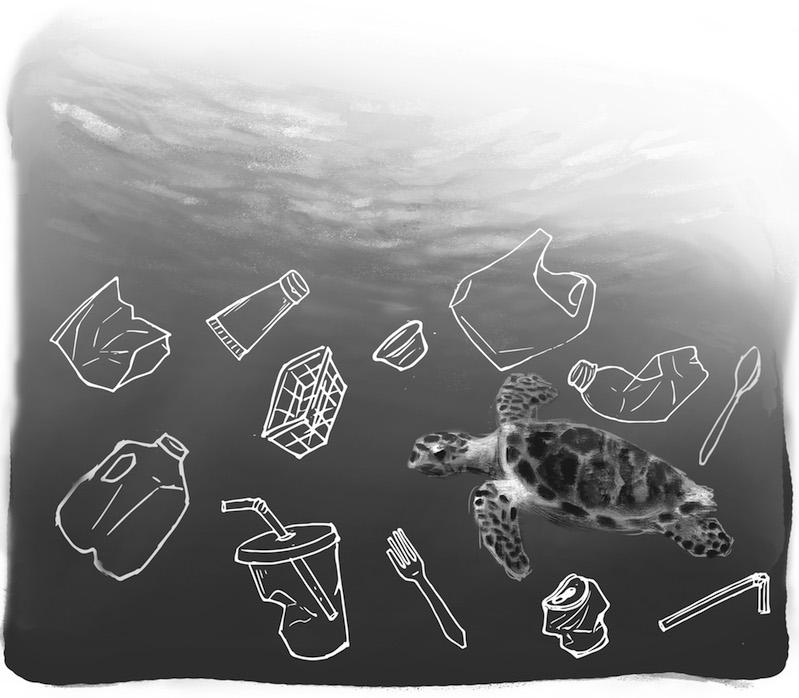“There are even indications that there is plastic in our blood streams.” This could be the opening to an episode of Black Mirror. Instead, it is what Palo Alto High School environmental science teacher Alicia Szebert tells me about the ongoing plastic waste crisis our planet is facing.
However bleak the future of life on Earth may seem, many have chosen not to remain complicit in this cycle of self-destruction. After a heart-breaking video depicting a plastic straw being painfully removed from the nostril of a sea turtle went viral, the West Coast has become obsessed with the banning of plastic straws in restaurants and places of business, with viral hashtags reading #strawssuck and #banthestraw. While many environmental activists thoroughly support this proposition, it has brought up concerns regarding accessibility.
Plastic straws may be an able-bodied persons luxury, but they are a basic necessity to many within the disabled community.
Switching to biodegradable and reusable straws, as some have suggested, may not be a viable — or even safe — option for people with symptoms such as limited jaw movement and involuntary muscle spasms. Straws made from biodegradable materials like paper can fall apart too quickly and are easy to bite through. Reusable silicone and metal straws not only require being washed, which may pose a challenge to some, but also cause major flexibility issues and conduct both heat and cold, according to NPR senior editor Tove Danovich.
Furthermore, the straw ban may not be as effective as some think. Yes, more than half a million plastic straws are used across the planet daily. However, plastic straws make up only 4 percent of plastic trash by piece, reports US News.
There are many other ways both the government and Paly students themselves can work towards reducing waste and preserving habitats threatened by pollution and climate change.
To truly protect the environment, co-president of Paly’s Climate Vision Club Allison Brand says she would like to see our country putting more resources toward managing, and not just reducing, waste and taxing plastic.
“40 percent of plastic produced globally is packaging, which is often used only once,” Brand says.
As a community, Paly should be mindful of our impact on the environment and educated about easy ways to reduce that impact.
Students should be wary of sorting trash correctly, as treatment centers may send contaminated loads to landfills. When plastic, a fairly lightweight material, is left out in the open, it can often be blown away into the ocean, resulting in the depletion of sea life.
“Before throwing out a plastic bag, always remember to tie it in a knot first,” Brand adds. “Doing this could literally save a turtle’s life.”
Furthermore, consumers have the ability to influence what packaging companies use by purchasing products with less or eco-friendly packaging.
As a community, we have a responsibility to analyze the intersectionalities of every proposal put forth. A straw ban would have a marginal impact on the environment while posing accessibility problems to people who already face discrimination and isolation from everyday activities.




